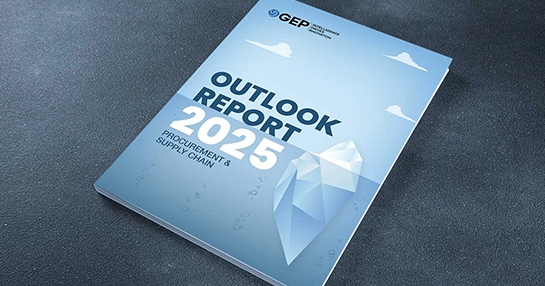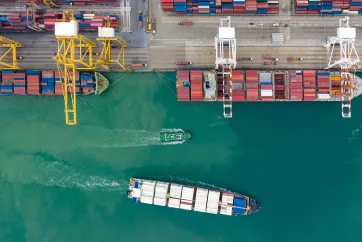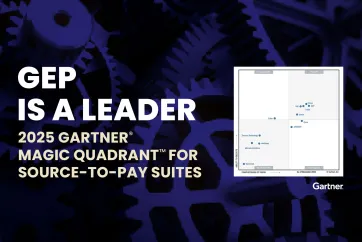
Act Now or Play Safe? Here’s How to Respond to Tariff Uncertainty
- Tariffs now dominate executive agendas, reshaping decisions across supply and procurement.
- Delayed or impulsive responses to tariffs can damage long-term competitiveness.
- Scenario planning and tech investments enable agile and resilient supply chain leadership.
April 17, 2025 | Risk Management 3 minutes read
By John Piatek
Oxford and Merriam-Webster won’t have to look far to find the 2025 "Word of the Year."
Tariffs, once a topic for economists and trade policy experts, have become a daily reality for business leaders, with their frequent imposition, revocation and increase.
Trade tariffs are emblematic of a longer-term resistance to free trade, a trend GEP profiled in our GEP Outlook 2025 report.
For executives — especially in procurement and supply chain — the key question is: What should we do now? Wait and watch? React?
Decision Paralysis Will Cost You
In times of uncertainty, the instinct is to wait. It’s tempting to pause, hoping for clarity before moving forward. But here’s the reality: choosing to wait can cost you. While you wait, others are adjusting, recalibrating and positioning themselves to adapt. The market doesn’t slow down for you to catch up. The longer you hesitate, the more ground you risk losing. Inaction in volatile times often leads to missed opportunities.
But Hasty Decisions Are Equally Risky
On the other hand, reacting impulsively to every tariff shift is equally risky. The flood of news about tariffs may impel you to act quickly, but hasty decisions are rarely aligned with long-term goals. Quick reactions can disrupt operations, waste resources and lead to decisions that don’t reflect your core strategy. The real challenge isn’t in waiting—it’s in reacting without thinking through the consequences. Hasty moves don’t create clarity; they create confusion.
Leaders Plan Smartly and Execute Even Better
The solution? Scenario planning. It’s not about waiting for the dust to settle or reacting under pressure—it’s about actively preparing. Scenario planning lets you anticipate various futures and develop flexible strategies that align with your goals, not just with the latest tariff news.
Scenario planning doesn’t predict the future, but it does help you prepare for it. By considering different outcomes—from escalating tariffs to their removal—you equip your organization to pivot quickly and act confidently, no matter what happens. It’s about creating a clear path forward, despite the uncertainty.
Investing in Resilience
When it comes to investments, the natural instinct is to freeze spending until things stabilize. But not all investments should stop. The key is to focus on resilience. This is a good time to invest in technology—for instance, AI, data analytics and digital tools—that are essential for building the flexibility and agility needed to weather uncertainty.
Technology allows businesses to restructure operations, improve decision-making, and stay ahead of disruptions. In the face of shifting trade policies, those who invest in resilience—through technology—are better positioned to adapt quickly and effectively.
So, What Next?
In uncertain times, leadership is about making informed decisions, not reacting to every headline. It’s about strategic planning, smart investments and staying focused on long-term goals. Scenario planning and investments in technology are key to navigating uncertainty and preparing your organization for whatever comes next.
With the right strategy in place, you won’t have to be reactive; you’ll be ready to adapt and move forward, confident in your ability to lead, no matter what the next tariff or policy shift brings.
John Piatek is vice president of consulting at GEP.
Find more such insights on the GEP Tariff Management Resource Center.
Talk to a GEP expert to protect your supply chain from tariff disruptions.
Turn ideas into action. Talk to GEP.
GEP helps enterprise procurement and supply chain teams at hundreds of Fortune 500 and Global 2000 companies rapidly achieve more efficient, more effective operations, with greater reach, improved performance, and increased impact. To learn more about how we can help you, contact us today.

John Piatek
Vice President, Consulting
John has over 15 years of strategy consulting experience managing several large-scale engagements with leading global clients.
At GEP, John is responsible for partnering with leading CPG and retail enterprises on strategy, supply chain and management initiatives. John is also the Chair of GEP’s Thought Leadership Council.



